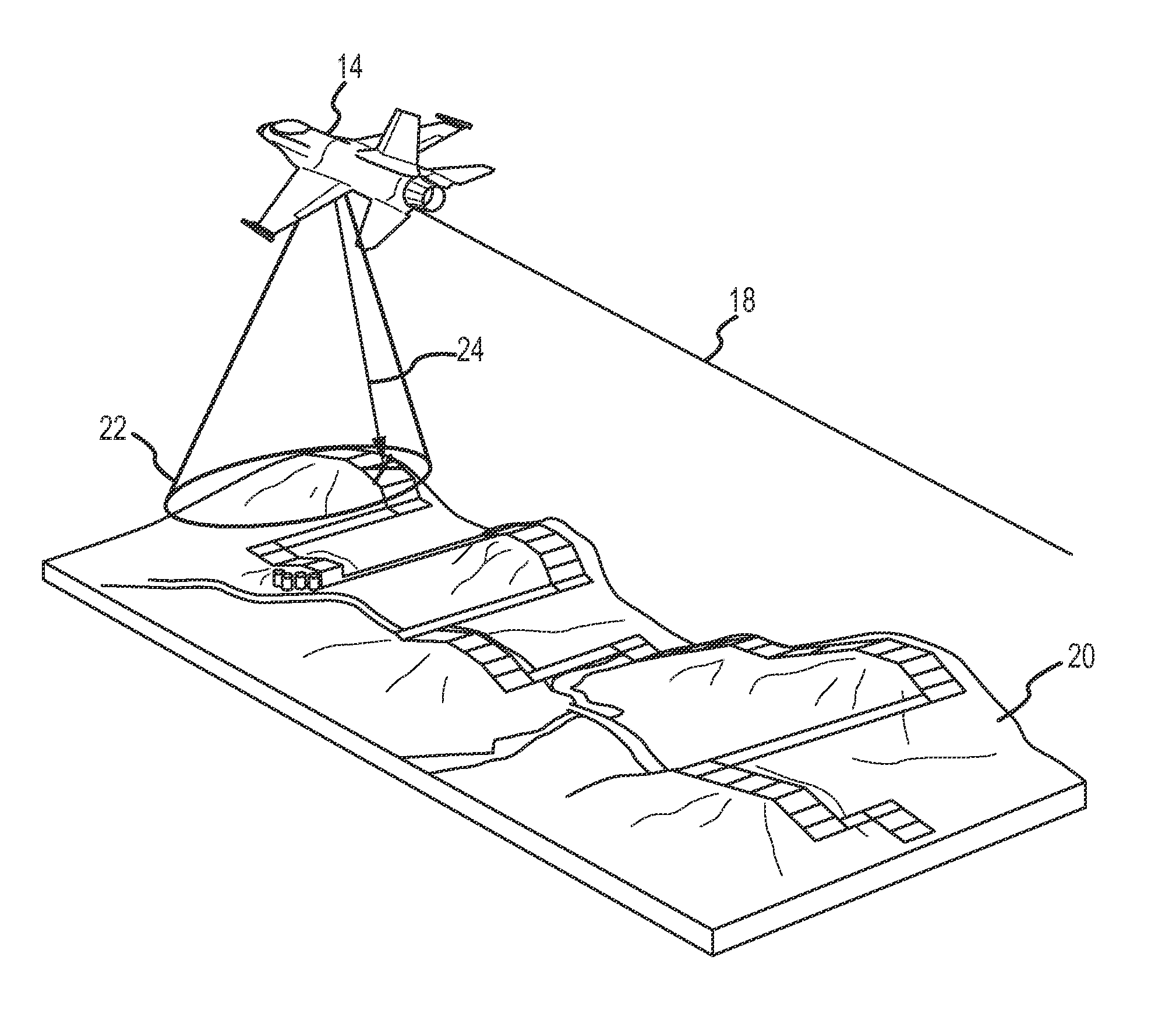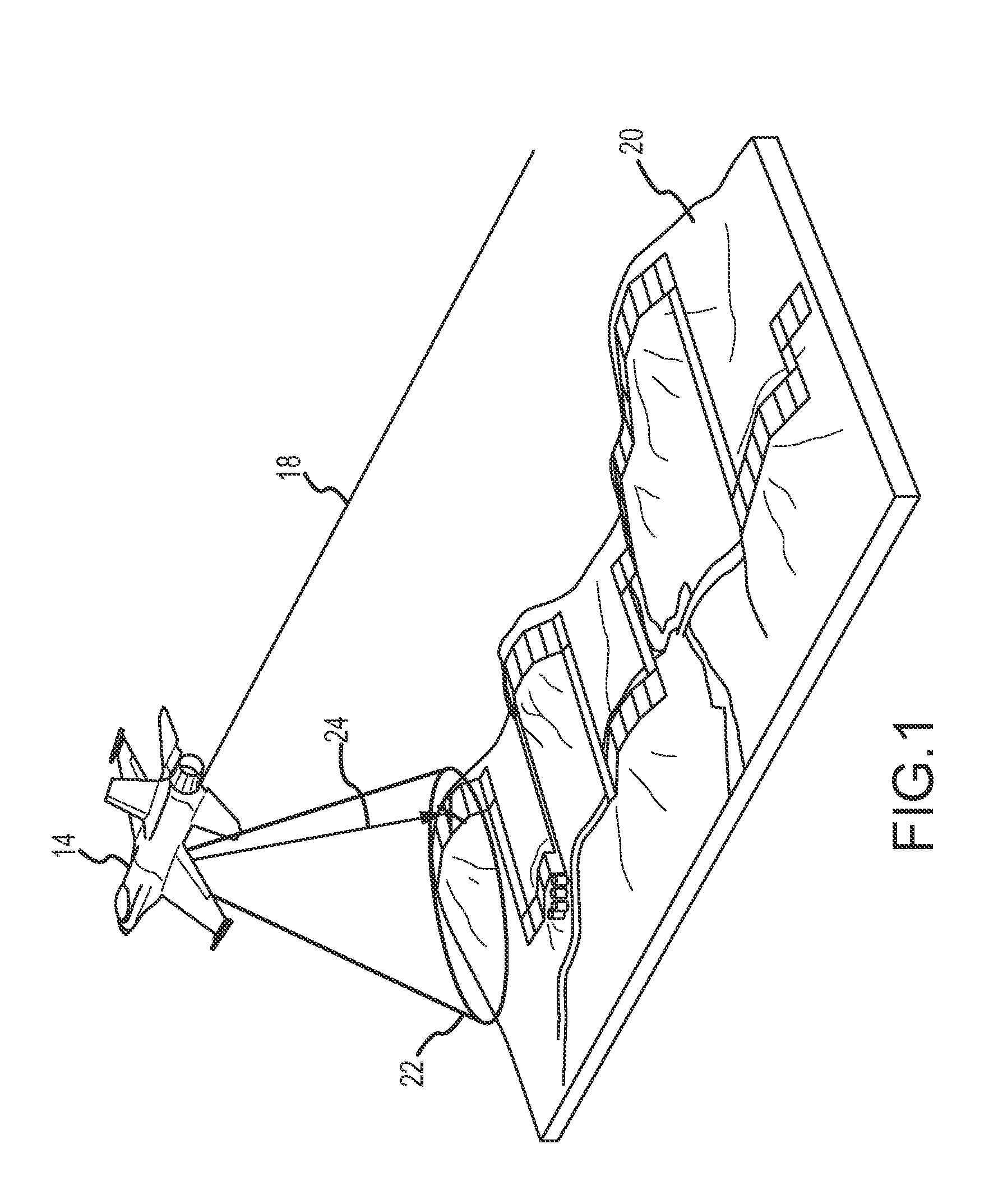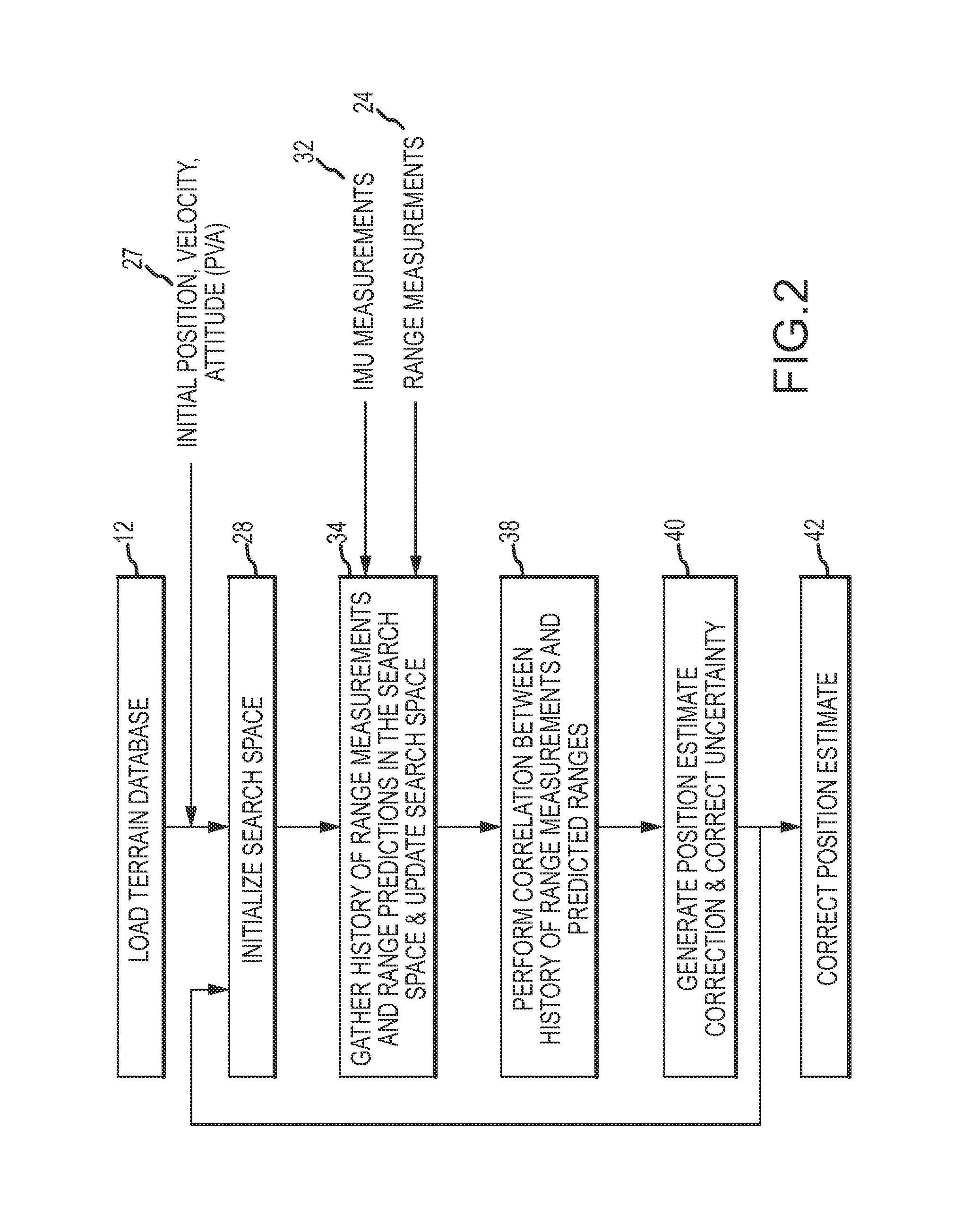Autonomous range-only terrain aided navigation
a technology of autonomous range and terrain, applied in the direction of navigation instruments, instruments, process and machine control, etc., can solve the problems of false correlation, labor-intensive preparation, and conventional radar altimeters do not provide bearing angles to the closest terrain, so as to minimize the differences over the history and improve the accuracy of correction
- Summary
- Abstract
- Description
- Claims
- Application Information
AI Technical Summary
Benefits of technology
Problems solved by technology
Method used
Image
Examples
Embodiment Construction
[0026]Neither conventional TERCOM nor any of the range-only improvements to TERCOM allow the format of terrain height maps or database to be fully independent of the flight of the vehicle. Even if the vehicle's current uncertainty basket inside which the correlation is performed were to be calculated during flight from the estimated position uncertainty, in all prior attempts the size of the uncertainty basket is held constant over the history of the radar altimeter measurements used for the correlation, which does not account for any growth of the position error over the measurement history. If the distance between the true position of the vehicle and the estimated position drifts outside of the original uncertainty basket, then the algorithm may correlate to an erroneous solution. Also, in all prior range-only methods, the spacing used in the terrain height maps or database is the same as the spacing used in correlation process, and therefore must be managed carefully to allow the...
PUM
 Login to View More
Login to View More Abstract
Description
Claims
Application Information
 Login to View More
Login to View More - R&D
- Intellectual Property
- Life Sciences
- Materials
- Tech Scout
- Unparalleled Data Quality
- Higher Quality Content
- 60% Fewer Hallucinations
Browse by: Latest US Patents, China's latest patents, Technical Efficacy Thesaurus, Application Domain, Technology Topic, Popular Technical Reports.
© 2025 PatSnap. All rights reserved.Legal|Privacy policy|Modern Slavery Act Transparency Statement|Sitemap|About US| Contact US: help@patsnap.com



